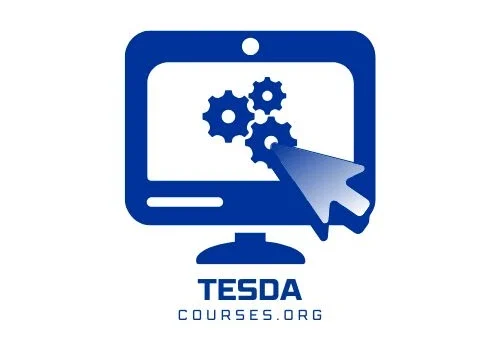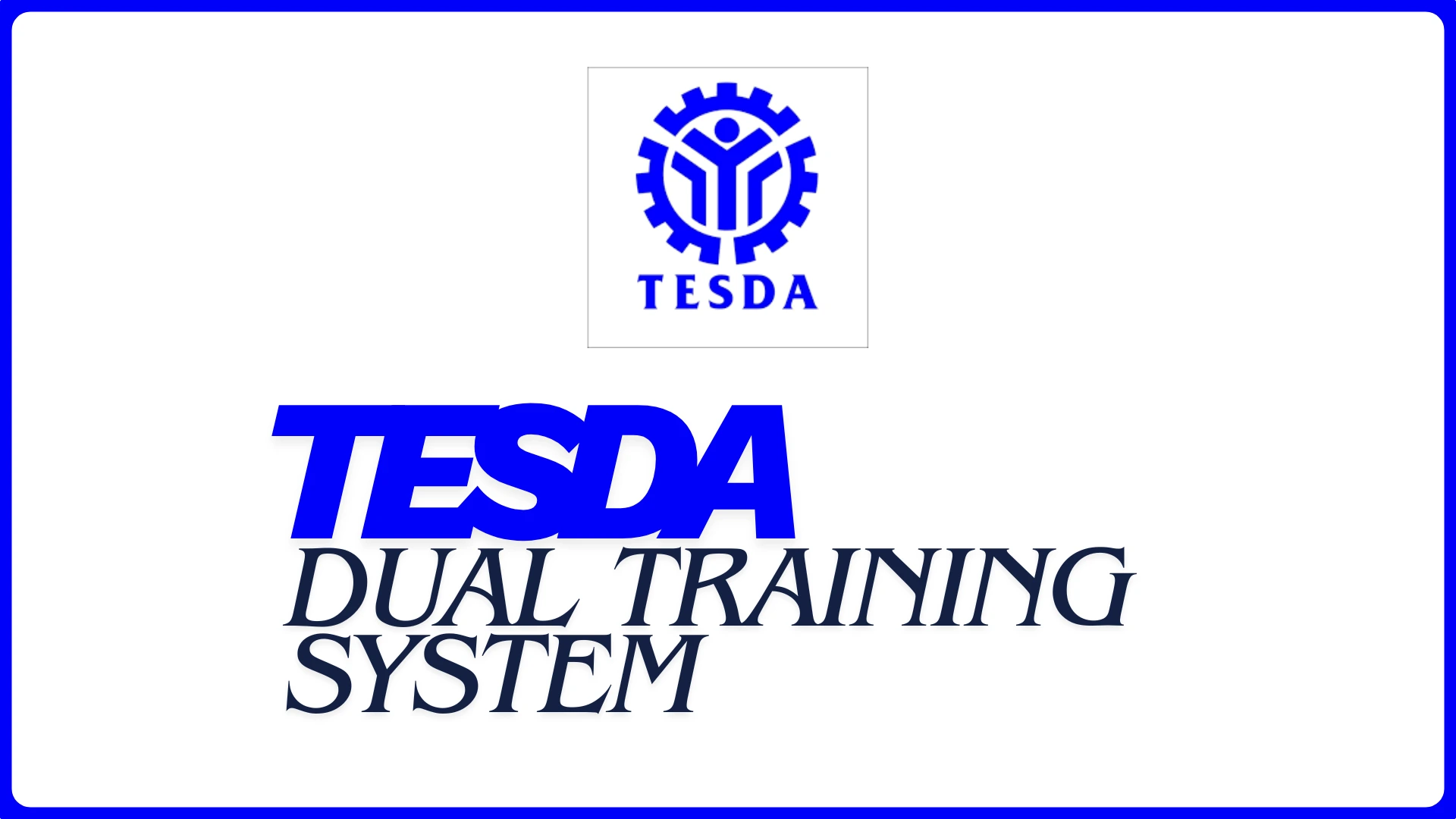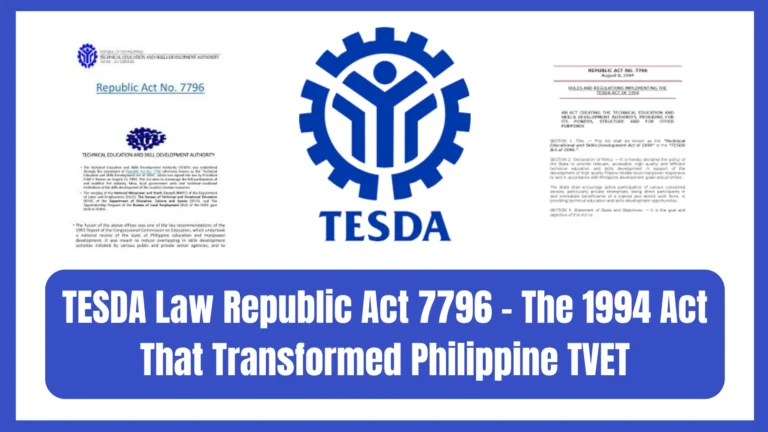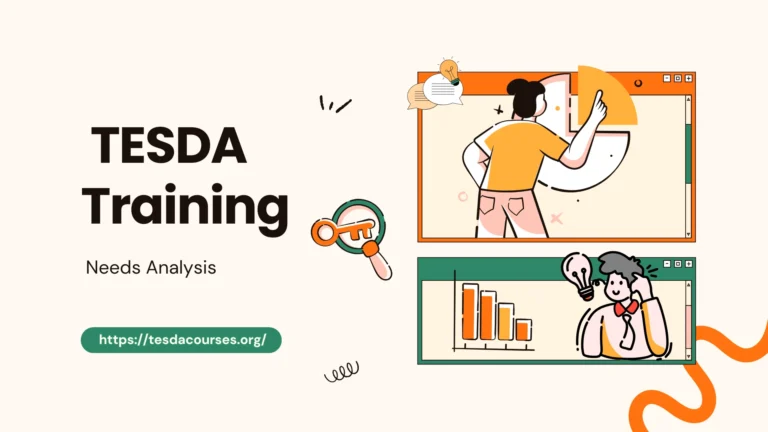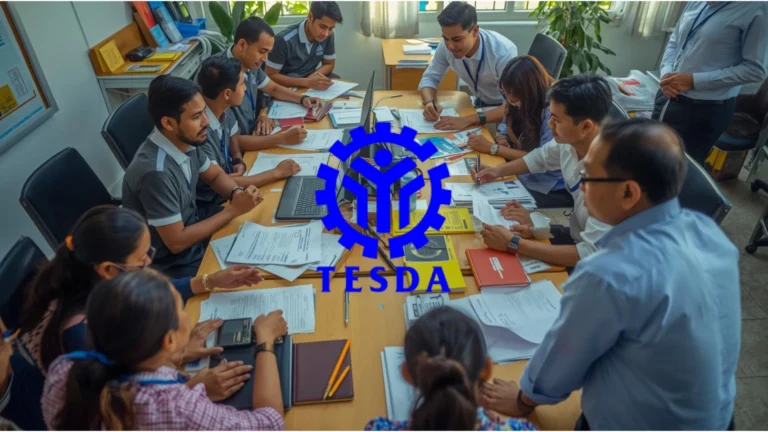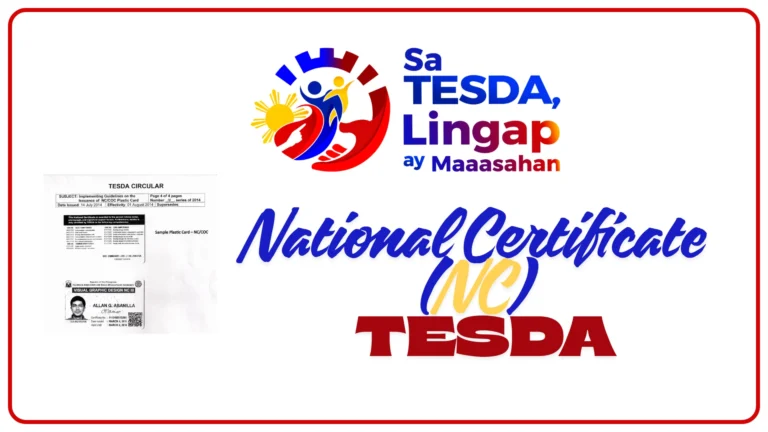TESDA Dual Training System: The Ultimate Guide to Earning While You Learn in the Philippines
Picture this: You’re getting trained in your dream career, working with actual industry professionals, gaining real-world experience, and getting paid for it. Sounds too good to be true? Welcome to the TESDA Dual Training System—probably the best-kept secret in Philippine technical education.
I’ll be honest with you. When I first heard about this program, I was skeptical. Free training? Paid work experience? Industry connections? It sounded like one of those “earn money from home” schemes. But here’s the thing—it’s completely legit, government-backed, and it’s been quietly transforming how Filipinos (and yes, international students too) break into skilled trades.
Let me break down everything you need to know about the TESDA Dual Training System program.
What Is the TESDA Dual Training System?
Think of TESDA DTS as the love child between classroom learning and on-the-job training—but on steroids. It’s a training approach that splits your learning journey into two environments:
- School-based learning (theory, fundamentals, basic skills)
- Plant-based training (real workplace, actual projects, industry mentors)
The genius here? You’re not just reading about electrical wiring or culinary techniques in some dusty textbook. You’re actually doing it in real companies, with real deadlines, solving real problems. And unlike internships where you’re basically the coffee person, you’re treated as a legitimate trainee being groomed for the workforce.
The Ultimate Guide to TESDA Free Courses Online: Certificates, Allowances, and How to Enroll ?
Why the TESDA Dual Training System Benefits Are Game-Changing
Let’s talk about what makes this program different from your typical TESDA course or college degree:
For Trainees (That’s You!)
1. You Get Paid to Learn No joke. While you’re in the plant-based phase, TESDA Dual Training System trainees receive an allowance or wage from the host company. It’s not “get rich quick” money, but it covers your daily expenses and then some.
2. Zero or Low Training Fees Many TESDA Dual Training System programs are heavily subsidized or completely free. Some even offer TESDA Dual Training System scholarship options. Compare that to the tuition fees you’d pay for a four-year degree.
3. Real Industry Connections By the time you finish, you’re not a stranger to your industry—you’ve got mentors, references, and often a job offer from your host company. That’s the TESDA Dual Training System trainee benefits everyone talks about.
4. Nationally Recognized Certification You complete with a TESDA certification that employers actually respect. No explaining away a degree from “University of Social Media.”
5. Higher Employment Rates Statistics show that TESDA Dual Training System success stories include employment rates of 80-90%+ after program completion. Traditional graduates? Not even close.
For Employers
Why do companies participate in the TESDA Dual Training System employers program?
- Access to pre-trained talent that fits their specific needs
- Lower recruitment costs
- Opportunity to assess potential employees before hiring
- Tax incentives from the government
- Contributing to national skills development
It’s a win-win. You get training, they get motivated workers. Nobody loses.
TESDA Dual Training System Requirements: Can You Join?
Here’s what you need to know about TESDA Dual Training System program eligibility:
Basic Requirements:
- At least 18 years old (some programs accept 17 with parental consent)
- High school graduate or equivalent
- Physically and mentally fit for the chosen occupation
- Willing to commit to the full training duration
- Pass the host company’s screening process
For International Students:
- Valid visa or study permit
- Working permit (if required for plant-based training)
- Proficiency in English or Filipino
- Meet all standard requirements above
The beauty of DTS? It’s more flexible than traditional education. Don’t have perfect grades? Not a dealbreaker. What matters is your willingness to learn and your commitment to the program.
The Complete Guide to TESDA Scholarships: How to Get Your Allowance and Train for Free
How TESDA DTS Registration Works
Ready to sign up? Here’s the TESDA Dual Training System application process simplified:
Step 1: Choose Your Program
Check the TESDA Dual Training System program list on the official TESDA website. Popular TESDA Dual Training System courses include:
- Automotive servicing
- Electrical installation and maintenance
- Hotel and restaurant services
- Food and beverage services
- Machining
- Welding
- Electronics
- Information technology
Step 2: Find Accredited Institutions
Look for TESDA DTS accredited institutions in your area. These are training centers that have met TESDA’s standards and have partnerships with companies willing to host trainees.
You can search through the TESDA Dual Training System online portal or contact your local TESDA office directly.
Step 3: Submit Your Application
Complete the TESDA Dual Training System application form. You’ll need:
- Birth certificate
- High school diploma or equivalent
- Valid IDs
- Medical certificate
- Passport photos
- Certificates of good moral character
Some programs now offer TESDA Dual Training System online registration—saving you a trip to the office.
Step 4: Pass the Screening
This typically includes:
- Written exam (basic knowledge test)
- Interview
- Skills test (depending on the program)
- Medical examination
The screening isn’t designed to fail you—it’s to ensure you’re a good match for the program and that the program is a good match for you.
Step 5: Get Matched with a Host Company
Once accepted, you’ll be matched with one of the TESDA Dual Training System partners—a company willing to provide plant-based training. This is where the magic happens.
Understanding the Training Process
The TESDA Dual Training System training typically follows this structure:
| Phase | Location | Duration | What You Do |
|---|---|---|---|
| Foundation | Training Institution | 30-40% of program | Learn basics, theory, fundamental skills |
| Plant-Based | Host Company | 60-70% of program | Hands-on work, real projects, mentorship |
| Assessment | Assessment Center | 1-2 days | Competency evaluation for certification |
Total TESDA Dual Training System schedules range from 6 months to 2 years, depending on the qualification level and complexity of the trade.
The Work Immersion Component
Here’s where DTS really shines. During the TESDA DTS work immersion phase, you’re not sitting in a corner watching. You’re:
- Working on actual company projects
- Learning from experienced professionals
- Building your professional network
- Developing soft skills (punctuality, teamwork, communication)
- Understanding workplace culture and expectations
Think of it as a really long, really valuable job interview where you’re proving yourself every single day.
The Ultimate Guide to TESDA Requirements: Enrollment, Certification, and Center Accreditation
TESDA Dual Training System Assessment: Getting Certified
At the end of your training, you’ll face the TESDA Dual Training System assessment—a competency evaluation to determine if you’ve mastered the required skills.
TESDA Dual Training System assessment criteria includes:
- Practical demonstration of skills
- Knowledge tests
- Portfolio of work completed
- Supervisor evaluations from plant-based training
- Adherence to industry standards
Pass this, and you earn your National Certificate—the same certification you’d get from standard TESDA programs, but with way more practical experience backing it up.
The Role of Different Stakeholders
TESDA’s Role
The TESDA Dual Training System role in implementation includes:
- Setting training standards and regulations
- Accrediting training institutions
- Monitoring program quality
- Coordinating with industry partners
- Providing subsidies and support
Employer Responsibilities
Companies participating as TESDA Dual Training System employers must:
- Provide qualified workplace mentors
- Ensure safe working conditions
- Follow the approved training curriculum
- Pay trainee allowances during plant-based training
- Allow time for competency assessment
Trainee Commitments
As a TESDA Dual Training System trainee, you’re expected to:
- Attend all training sessions
- Meet performance standards
- Follow company policies during plant-based training
- Complete the full program duration
- Take the competency assessment seriously
Costs and Financial Support
Let’s address the elephant in the room: TESDA Dual Training System fees.
The Good News: Most DTS programs are heavily subsidized. Your TESDA Dual Training System program fees might only cover:
- Registration (often waived)
- Training materials (minimal)
- Uniform or safety equipment (sometimes provided)
- Assessment fee (standard TESDA assessment cost)
Financial Aid Options:
- TESDA Dual Training System scholarship programs
- TWSP (Training for Work Scholarship Program) vouchers
- Company sponsorships
- PESO (Public Employment Service Office) support
During plant-based training, you receive allowances that often exceed any initial costs. So technically, you might make money rather than spend it.
Real Success Stories
The TESDA Dual Training System success stories are inspiring. I’ve met:
- Maria, who went from zero culinary experience to sous chef at a 5-star hotel within 18 months
- Carlos, an automotive DTS graduate now running his own repair shop
- Jasmine, an IT DTS trainee who got hired by her host company before completing the program
These aren’t exceptions—they’re the norm. The TESDA Dual Training System training outcomes consistently show that graduates are job-ready from day one because they’ve already been on the job.
Monitoring and Quality Assurance
TESDA takes TESDA Dual Training System program monitoring seriously. Regular checks ensure:
- Training institutions meet standards
- Companies provide quality mentorship
- Trainees receive proper training and fair treatment
- Programs align with industry needs
The TESDA Dual Training System supervisor guide and TESDA Dual Training System employer guide outline these standards clearly.
Common Questions: TESDA Dual Training System FAQs
Q: Can international students join? Yes! As long as you have the proper visa and work permits, you’re eligible. Check with TESDA and immigration for specific requirements.
Q: What’s the age limit? Most programs accept ages 18 and above. Some trades might have upper age limits, but these are rare.
Q: Do I need work experience? Nope. That’s the whole point—you’re learning on the job.
Q: What if I don’t get hired by my host company? You’ll still have your certification, practical experience, and the skills to apply elsewhere. Many graduates get multiple job offers.
Q: Can I switch companies during training? Generally, no. You’re committed to your assigned host company for the duration.
The Ultimate Guide to TESDA Training Centers, Courses, and Contact Information Nationwide
Latest Updates and Innovations
Keep an eye on TESDA Dual Training System program updates:
- Expansion of TESDA Dual Training System online training components
- More TESDA Dual Training System online resources and portals
- New industry partnerships
- Updated training regulations to match evolving industry needs
- Enhanced monitoring systems through digital platforms
The TESDA Dual Training System online portal now offers improved features for tracking your progress, accessing resources, and connecting with mentors.
Coverage and Accessibility
The TESDA Dual Training System coverage extends throughout the Philippines, from urban centers to provincial areas. TESDA continues expanding the program to make it accessible to more communities.
Check the TESDA Dual Training System program list regularly as new courses and locations are added frequently.
For Employers: Getting Involved
Interested in becoming one of the TESDA Dual Training System partners? The TESDA Dual Training System employer guide outlines how to:
- Apply for accreditation as a training plant
- Meet facility and mentor requirements
- Develop training plans
- Access incentives and support
The TESDA Dual Training System benefits for employers make this partnership worthwhile—you’re essentially growing your own talent pipeline.
TESDA Courses for Abroad: The Ultimate Guide to In-Demand NC II & NC III Certifications
Making Your Decision
Here’s my take: If you’re serious about building a skilled career without drowning in student debt, the TESDA Dual Training System is one of the smartest moves you can make.
It’s not for everyone. You need discipline, commitment, and genuine interest in your chosen field. But if you’ve got those? This program will fast-track your career in ways traditional education simply can’t match.
The TESDA Dual Training System program benefits speak for themselves:
- Practical skills over theoretical knowledge
- Industry connections before graduation
- Income instead of debt
- Higher employment rates
- Real-world experience that employers value
Take the First Step
Ready to transform your future? Here’s your action plan:
- Research available programs on the TESDA website
- Visit your nearest TESDA DTS accredited institution
- Talk to current trainees and graduates if possible
- Prepare your requirements early
- Apply for your chosen program
- Commit fully to the process
Don’t overthink it. The perfect time to start? Right now.
The TESDA Dual Training System registration process is open year-round for various programs. Check specific TESDA Dual Training System schedules for your area and program of interest.
Remember: While your friends are still arguing about their thesis topics, you could be getting paid to learn real skills in real companies, building the foundation for a successful career.
The question isn’t whether you should join the TESDA Dual Training System. It’s why haven’t you applied yet?
For the latest information on TESDA Dual Training System program implementation and updates, visit the official TESDA website or contact your regional TESDA office. Your future self will thank you.
